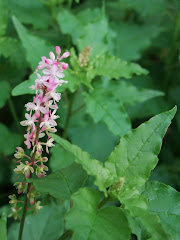

The 3-acre 'National Garden' that now surrounds it was completed in 2006 and contains mostly plants native or adapted to the Mid-Atlantic region, as well as rose and pond gardens.



The 3-acre 'National Garden' that now surrounds it was completed in 2006 and contains mostly plants native or adapted to the Mid-Atlantic region, as well as rose and pond gardens.
 It's just like all those years we had such high hopes every spring for the Red Sox only to have them dashed in August. I'm underwhelmed by the tomatoes' progress. This German Johnson has not one fruit on it, and the leaves have malformations, not to mention that the lower ones are turning light yellow.
It's just like all those years we had such high hopes every spring for the Red Sox only to have them dashed in August. I'm underwhelmed by the tomatoes' progress. This German Johnson has not one fruit on it, and the leaves have malformations, not to mention that the lower ones are turning light yellow. on the Jaune Flamme turned up like this. I believe it's the tomato fruitworm, aka corn earworm. Disgusting! No worms on any other plants.
on the Jaune Flamme turned up like this. I believe it's the tomato fruitworm, aka corn earworm. Disgusting! No worms on any other plants.
 And this is clearly bird damage-- there were 3 of these on the lower part of the BHN-444, still hanging from the stem.
And this is clearly bird damage-- there were 3 of these on the lower part of the BHN-444, still hanging from the stem.Current Tally (all green):
So I'm thinking I could have spent some of the $$$ I threw down on compost, fertilizer and plants at the Farmers' Market instead and had a BLT by now. No tomato picture (although they have lots), but here's some of the other great stuff at the Austin Farmers' Market last Saturday. If you've not been lately, you should hike on down there to the corner of San Antonio and 4th St. soon. Great people and dog watching, friendly farmers, terrific pickup breakfast food, the best coffee, and live music! Peaches, blueberries and blackberries in abundance.



 When not yelling at the vegetables, I'm now enjoying the new fountain that was installed last week. Those darn birds seem to like it, too.
When not yelling at the vegetables, I'm now enjoying the new fountain that was installed last week. Those darn birds seem to like it, too.